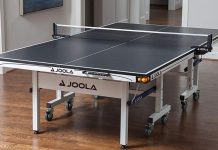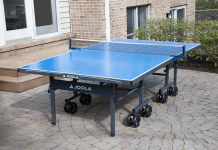Like most other pieces on a chess board, a knight can indeed move backwards. When moving forward, a knight can move two squares horizontally and one vertically (and vice versa). The knight can replicate this move when moving backwards.
From getting to know the ins and outs of the knight and all its moves, to tactics you’ll want to undertake with your knights and that head-scratching question: can a knight move backwards? In this article, we’ll discuss all that you need to know in-depth, to take your knight knowledge to the next level.
Let’s check out the chess board’s knight, shall we?
Table of Contents
Getting to know the knight
Any chess player values their mighty queen, and let’s not forget the rook that can topple empires, but another chess favorite is the tactful knight; the only piece on the board that can move in its unique “L-shape”.
I first started playing chess in primary school, after my dad taught me the basics at home (thanks, Dad!). Immediately, I was fascinated by the mighty knight. Sure, a bishop could cut corners like no other, a rook could ruin opponents from miles away, and there are few pieces as powerful as the do-it-all queen, but none of the pieces can maneuver quite as silently and tactfully as the knight.
After this chess piece caught my attention, I took a deep dive into all the knowledge of this interesting piece that I could get my hands on. In the school library, of course. In those days, we didn’t have the convenience of using Google.
Interestingly, the knight has one of the oldest movements on the chess board, along with the stately king and powerful rook. The knight’s movement has remained unchanged since the invention of chess’ predecessor, Chaturanga, in the 6th century. Why mess with perfection, right?
Another reason why I admire the knight is because it represents cavalry on the chessboard. Like the soldiers who would fight wars on horseback back in the day, the knight doesn’t charge head-on towards its enemy. Instead, it veers to the side – a tactic to outflank its opposing forces.
This battle strategy inspired the knight’s movement as we know it today. Each time I use the knight, I imagine it sneaking up on an opponent’s piece and yelling ‘surprise!’ before its attack. If you’re a Harry Potter fan, you’ll be reminded of the scene in The Philosopher’s Stone, where Harry, Hermione and Ron play a life-sized game of Wizard’s Chess, and Ron yells “Knight to e5!”. Riveting stuff, I’m telling you.
Related: The best weighted chess pieces and where to find them
Let’s take a step back: what is a knight?
In chess, a knight is the piece that is traditionally shaped like a horse, although modern chess boards may have varying interpretations of this piece.
On both ends of the checkered board, each player begins with two knights. When starting a game of chess, the knight is placed between the bishop and the rook, on the row closest to each player.
A knight is valued at three points, the same as its neighbor the bishop.
How do knights move?
Compared to other pieces on the chess board, the knight’s battle tactics are unique. This piece moves in an “L-shape”, whereas other pieces move in straight lines (although some of these lines can be diagonally, such as with the bishop).
“L-shape?”, you might wonder: let me explain. A knight moves either two squares vertically in any direction, followed by one square horizontally. For a variation of this move, the knight can also move horizontally via two squares in any direction, followed by one square vertically.
Another reason why I admire the knight, is the fact that it is the only chess piece that can jump over any pieces, whether your own or your opponent’s. A knight has access to parts of the chessboard that other pieces may only gain by taking and losing pieces, making it an extremely valuable piece in any chess player’s arsenal.
As with any other piece on the board, a knight captures its enemy by replacing them on their square. Due to the L-shaped nature of the move, a knight will always land on a different colored block as to the one it started on; a handy tip when teaching this move to young chess or new chess players.
Which tactics can I use with my knight?
In his masterclass, world chess champion Garry Kasparov mentions a few tactics that chess players can use to their advantage when it comes to the knight.
These tactics include developing your knights early, looking for outposts and occupying the center of the board. Let’s discuss these tactics in more details:
- Develop your knights early
In chess, we often make the mistake of thinking that we have to use our pawns first. This is what we were taught, right?
Only, a chess player can gain much faster control over the center of the board when developing knights at an early stage. As the knight is the only chess piece that can jump over other chess pieces, it is also the only piece that can be moved even before pawns.
Once your knight is developed, it also allows you to castle your king to safety early in the game.
- Look for outposts
As mentioned above, knights do well in the center of the board, but this also leaves them vulnerable to surprise attacks from the side. Protect your knight by developing it to the valuable center squares of the board, which are not immediately threatened by opposing pieces.
For this reason, we refer to these squares as outposts. By occupying these positions, you will also make it more difficult for your opponent to develop their pawns, causing holes in the protection tactics.
- Occupy the center of the board
We’ve mentioned that the center of the board is a great war tactic, but there is another reason why knights do best in this position: limits. Unlike other chess pieces that can move in straight lines as far as opposing pieces allow them to, knights can only move three spaces at a time.
For this reason, you can maximize their move range by placing them in the center of the board. This way, they’ll be able to attack eight squares around them. A knight placed on the edge of the board is only able to attack three to four squares, and a cornered knight only has two possible moves to choose from. Don’t put Baby in a corner!
Other tips shared by Kasparov include being on the lookout for traps and using forks to your advantage.
As you know, a knight on a white square will always end on a black square after a move, which makes it vulnerable for lurking bishops on a black square. Make sure to check for any possible hidden attacks.
Secondly, knights are great pieces when you’ve hit a fork in the road. When you want to attack two of your opponent’s pieces at the same time, a knight allows you to enter attack mode on both, with lower chances of a return attack from your opponent.
Can a knight move backwards?
In chess, a knight can move both forward and backwards. It does so with its unique move of maneuvering in an L-shape, either with two squares vertically and one horizontally or two squares horizontally and one vertically.
While moving forward or backwards, a knight is the only piece that can jump over any other chess pieces, whether it be pieces from its own side or from its opponent’s side.
By being able to move backwards, a knight can head towards an active outpost, where the enemy might be planning an attack. A knight can also move backwards to protect the king and queen from any threatening moves.
Joining the knight in its capabilities to move backwards is the king, queen, rook and bishop. The only chess piece that can not move backwards in the pawn. Technically, of course, the only time that a pawn can move backwards is when it reaches that magical moment of promotion. This happens when a pawn reaches the opposite end of a board and is promoted to a queen.
Why would you move your knight backwards?
The aim of chess is to move forward and defeat your opponent’s king, then why are we moving our knight backwards?
Ah, if only it was that simple! While the aim of chess is definitely to topple the enemy’s king, you also have to protect your own monarchy. This often means having to retreat from attack and head back to the front lines.
Here are a few reasons why you would move your knight backwards in chess:
To protect itself
Why does any piece ever move backwards on a chess board? Quite likely to protect itself from being captured by an opponent. If you spot a lurking threat to your trusty knight, you might want it to take a few steps back once you get the chance.
Here’s an example. On the chess board below, you’ll see that the white knight on D5 is threatened by an opposing black pawn on B6. In this scenario, the knight is better off moving backwards, to either C3 , E3, B4 or F4, where it will be out of immediate danger.
Of course, the knight could allow itself to be captured, and leave the white pawn on E4 to take revenge on the pawn by capturing it in return. However, this isn’t a good long term strategy, as a knight is worth 3 points and a pawn is only worth 1. Plus, a knight has much more moves to its availability than a pawn.
The Knight could also move forward to E7 or C7, but the first move would place the white king in danger and the second just seems silly: why head into opposing front lines without backup?
To head to an outpost
A square on the fourth, fifth, sixth or seventh rank of a chess board is referred to as an outpost. This is a spot protected by a pawn that can not be attacked by an opponent’s pawn. A knight is also the perfect piece to move to this position, as its ability to jump allows for more move possibilities.
To protect another piece
We’ve all been there: your king is in danger and you need to adjust your strategy. Luckily, pieces (not including the pawn) have the ability to move backwards, often blocking an incoming threat. If the a queen is on the war path towards your king, send a knight her way for added protection.
To capture a piece
Luckily, moving backwards has another benefit other than self protection: capturing the enemy. Chess players may easily overlook the threat of a knight, because it moves in such a unique way. Without being able to clearly visualize the knight as a threat, they may place a piece on a spot actually in danger of a backwards moving knight. Use this to your advantage by setting a few traps for your opponent.
Conclusion
The knight is a powerful chess piece that can prove an invaluable piece when attacking the enemy and protecting the monarch. Unique to any other chess piece on the board, the knight moves in an “L-shape”, by either moving horizontally for two squares and vertically for one, or vice versa.
This valuable piece proves even more valuable when it does these precise moves, only backwards. By moving backwards, the knight can return to outposts in danger or return to the front lines to protect the king and queen.
Although it is only restricted to three moves at a time, the knight proves a worthy piece, and remains a favorite in most chess players’ arsenal.

Veronica is a Green Bay-based freelance writer and editor with extensive experience with board games. When not busy scribbling her thoughts, you might find her in her garden, hiking out in the woods, or exploring new food joints.
Veronica is a die-hard board game and chess hobbyist by night. She likes to try out new games and is always on the lookout to recruit new players for her game night (so beware!). When not playing board games or throwing darts, she is usually busy painting miniatures (or doing other nerdy stuff).
She is the CEO & Content Writer of Indoor Games Zone. She shares her expertise from years of playing chess, board games, and darts.

![Stiga XTR Pro Review | 1,559+ Global Ratings (In-Depth Guide) [year] Stiga XTR Pro Review](https://indoorgameszone.com/wp-content/uploads/2021/08/Stiga-XTR-Pro-Review-218x150.jpg)






